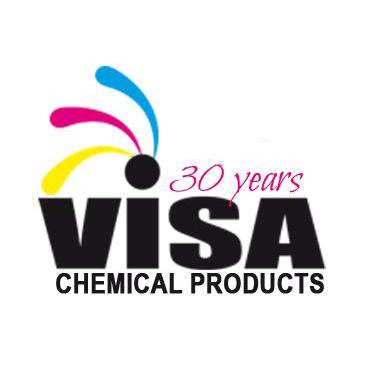STOOPEN & MEEÛS - Passion for colour - Pigments Dyes, Mineral Paints
Belgium
Multi-Category
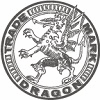
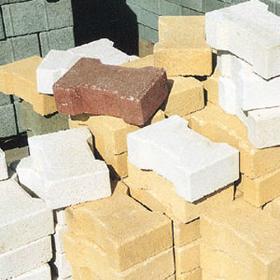
STOOPEN & MEEÛS
Belgium
Industry floors, concrete block-systems, plant pots, bicycle paths, clinkers, tiles, flags, joint wet mortar, cement adhesive, mineral paints,… NATURAL OXIDES: yellow, red, brown, black SYNTHETIC IRON OXIDES: yellow, red, brown, black DRAGON PIGMENTS: blue, green, grey CHROME OXIDE GREEN COBALTOXIDE BLUE CARBON- or PITCH-BLACK (limited) TITANIUM DIOXIDE WHITE A pigment is a substance that has the capacity of colouring a certain carrier (cement, plaster, synthetic fibres, paint, …). Contrary to dyes, pigments are insoluble. Therefore, pigments remain under the form of small particles and will just be dispersed in the carrier and so colouring the carrier. The colouring capacity of the pigment depends on the fineness of the particles composing the pigment. In general we can say that the finer the particles are, the higher the colouring capacity of the pigment will be. A pigment is only suitable for certain applications. The pigment shouldn’t react with the carrier.
Request for a quote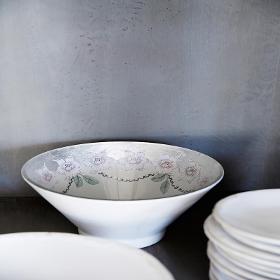
STOOPEN & MEEÛS
Belgium
Murals, stucco, decorative elements, mineral paints, ... NATURAL OXIDES: yellow, red, brown, black SYNTHETIC IRON OXIDES: yellow, red, brown, black DRAGON PIGMENTS: red, yellow, blue, green, grey CHROME OXIDE GREEN COBALTOXIDE: green, blue CARBON- or PITCH-BLACK (limited) ULTRAMARINE: blue, violet TITANIUMDIOXIDE WHITE A pigment is a substance that has the capacity of colouring a certain carrier (cement, plaster, synthetic fibres, paint, …). Contrary to dyes, pigments are insoluble. Therefore, pigments remain under the form of small particles and will just be dispersed in the carrier and so colouring the carrier. The colouring capacity of the pigment depends on the fineness of the particles composing the pigment. In general we can say that the finer the particles are, the higher the colouring capacity of the pigment will be. A pigment is only suitable for certain applications. The pigment shouldn’t react with the carrier.
Request for a quote
STOOPEN & MEEÛS
Belgium
Plastic, epoxy, polyester, alkyd, quartz floors, roofing, ... NATURAL OXIDES: yellow, red, brown, black SYNTHETIC IJZEROXIDES: yellow, red, brown, black DRAGON PIGMENTS: red, yellow, blue, green, grey CHROME OXIDE GREEN COBALT OXIDE: green, blue CARBON- or PITCH-BLACK MILORI OR PRUSSIAN BLUE CHROME GREEN YELLOW: PY 1, PY 3, ... RED: PR 2, PR 3, ... GREEN: PG 7, PG 8, ... BLUE: PB 15, ... ULTRAMARINE: blue, violet TITANIUM DIOXIDE WHITE A pigment is a substance that has the capacity of colouring a certain carrier (cement, plaster, synthetic fibres, paint, …). Contrary to dyes, pigments are insoluble. Therefore, pigments remain under the form of small particles and will just be dispersed in the carrier and so colouring the carrier. The colouring capacity of the pigment depends on the fineness of the particles composing the pigment. In general we can say that the finer the particles are, the higher the colouring capacity of the pigment will be.
Request for a quote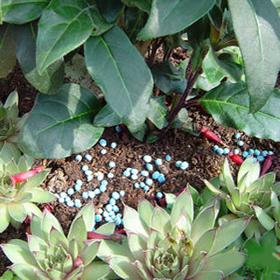
STOOPEN & MEEÛS
Belgium
Liquid and powdered fertilizers, sowing seed NATURAL OXIDES: yellow, red, brown, black BISTER SYNTHETIC IRON OXIDES: yellow, red, brown, black DRAGON PIGMENTS: red, yellow, blue, green, grey A pigment is a substance that has the capacity of colouring a certain carrier (cement, plaster, synthetic fibres, paint, …). Contrary to dyes, pigments are insoluble. Therefore, pigments remain under the form of small particles and will just be dispersed in the carrier and so colouring the carrier. The colouring capacity of the pigment depends on the fineness of the particles composing the pigment. In general we can say that the finer the particles are, the higher the colouring capacity of the pigment will be. A pigment is only suitable for certain applications. The pigment shouldn’t react with the carrier. Moreover, the pigment shouldn’t oxidize under influence of oxygen in the air and shouldn’t lose its colour under influence of sunlight (UV).
Request for a quote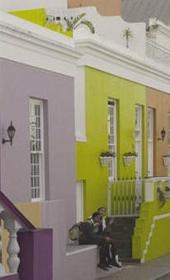
STOOPEN & MEEÛS
Belgium
Oil paint, watercontaining paint, mineral paint, synthetic paint, ... ZINC WHITE NATURAL OXIDES: yellow, red, brown, black SYNTHETIC IJZEROXIDES: yellow, red, brown, black DRAGON PIGMENTS: red, yellow, blue, green, grey CHROME LEAD/ LEAD CHROMATE: yellow, orange MOLYBDATE ORANGE CADMIUM SULPHIDE: yellow, orange, red CHROME OXIDE GREEN CHROMATE GREEN COBALTOXIDE: green, blue ULTRAMARINE: blue, violet MILORI OR PRUSSIAN BLUE CARBON- or PITCH-BLACK IVORY OR BONE BLACK CHROMATE GREEN YELLOW: PY 1, PY 3, ... RED: PR 2, PR 3, ... GREEN: PG 7, PG 8, ... BLUE: PB 15, TITANIUM DIOXIDE WHITE A pigment is a substance that has the capacity of colouring a certain carrier (cement, plaster, synthetic fibres, paint, …). Contrary to dyes, pigments are insoluble. Therefore, pigments remain under the form of small particles and will just be dispersed in the carrier and so colouring the carrier.
Request for a quote
STOOPEN & MEEÛS
Belgium
staining, polishing, varnishing,... NATURAL OXIDES: yellow, red, brown, black STAIN, COLOURED STAIN SYNTHETIC IRON OXIDES: yellow, red, brown, black CHROME OXIDE GREEN COBALT OXIDE: green, blue ULTRAMARINE: blue, violet CARBON- or PITCH-BLACK TITANIUMDIOXIDE WHITE LEAD CHROMATE : yellow, orange WATER-SOLUBLE DYES: acid and basic A dye is a substance that needs a certain affinity with the carrier on which it is being applied. Hence a bond is created and the colouring capacity emerges. Contrary to a pigment, a dye is a dissolvable colorant and the colouring capacity will only show when dissolved. Dyes always have an organic compound. For more than 5000 years, natural resources have been the base for dyes. Leafs, roots and berries are just some of the components. Nowadays, most of these components have been replaced by synthetic variants. Of course, special dyes are applied when considering nutrition.
Request for a quote
STOOPEN & MEEÛS
Belgium
petroleumbased products, candles, ... SOLVENT DYES A dye is a substance that needs a certain affinity with the carrier on which it is being applied. Hence a bond is created and the colouring capacity emerges. Contrary to a pigment, a dye is a dissolvable colorant and the colouring capacity will only show when dissolved. Dyes always have an organic compound. For more than 5000 years, natural resources have been the base for dyes. Leafs, roots and berries are just some of the components. Nowadays, most of these components have been replaced by synthetic variants. Of course, special dyes are applied when considering nutrition. (E100-199) Some dyes can be transformed in pigments by applying iron salt in a solution. This will cause the formation of the pigment. However, pigments won in this way are often little UV-resistant. What are dyes? There exists a great number of dyes for a great number of applications. Dyes are usually categorised based on their properties. (e.g.
Request for a quote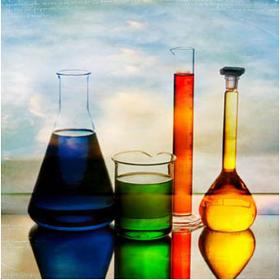
STOOPEN & MEEÛS
Belgium
detergents, ... WATER-SOLUBLE DYES A dye is a substance that needs a certain affinity with the carrier on which it is being applied. Hence a bond is created and the colouring capacity emerges. Contrary to a pigment, a dye is a dissolvable colorant and the colouring capacity will only show when dissolved. Dyes always have an organic compound. For more than 5000 years, natural resources have been the base for dyes. Leafs, roots and berries are just some of the components. Nowadays, most of these components have been replaced by synthetic variants. Of course, special dyes are applied when considering nutrition. (E100-199) Some dyes can be transformed in pigments by applying iron salt in a solution. This will cause the formation of the pigment. However, pigments won in this way are often little UV-resistant. What are dyes? There exists a great number of dyes for a great number of applications. Dyes are usually categorised based on their properties. (e.g.
Request for a quote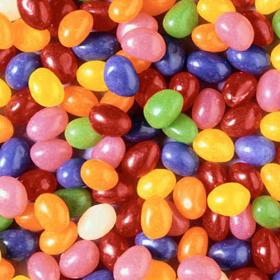
STOOPEN & MEEÛS
Belgium
candy, spices, herbs, ... FOODCOLOURS A dye is a substance that needs a certain affinity with the carrier on which it is being applied. Hence a bond is created and the colouring capacity emerges. Contrary to a pigment, a dye is a dissolvable colorant and the colouring capacity will only show when dissolved. Dyes always have an organic compound. For more than 5000 years, natural resources have been the base for dyes. Leafs, roots and berries are just some of the components. Nowadays, most of these components have been replaced by synthetic variants. Of course, special dyes are applied when considering nutrition. (E100-199) Some dyes can be transformed in pigments by applying iron salt in a solution. This will cause the formation of the pigment. However, pigments won in this way are often little UV-resistant. What are dyes? There exists a great number of dyes for a great number of applications. Dyes are usually categorised based on their properties. (e.g.
Request for a quote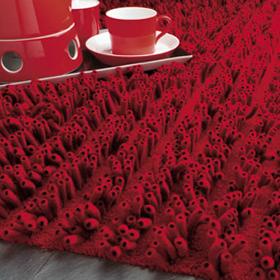
STOOPEN & MEEÛS
Belgium
wool, coton, leather, raffia, nylon, ... DIVERS DYES A dye is a substance that needs a certain affinity with the carrier on which it is being applied. Hence a bond is created and the colouring capacity emerges. Contrary to a pigment, a dye is a dissolvable colorant and the colouring capacity will only show when dissolved. Dyes always have an organic compound. For more than 5000 years, natural resources have been the base for dyes. Leafs, roots and berries are just some of the components. Nowadays, most of these components have been replaced by synthetic variants. Of course, special dyes are applied when considering nutrition. (E100-199) Some dyes can be transformed in pigments by applying iron salt in a solution. This will cause the formation of the pigment. However, pigments won in this way are often little UV-resistant. What are dyes? There exists a great number of dyes for a great number of applications. Dyes are usually categorised based on their properties. (e.g.
Request for a quoteeuropages also recommends
A selection of companies related to the activity:
A selection of products that might interest you

TER CHEMICALS DISTRIBUTION GROUP
Germany
We offer pigment preparations In guaranteed quality, at stable prices and packed appropriately for transportation. Do you need advice on choosing your product or are you looking for a suitable substitution? Our application and product experts are happy to help! Our experience and deep knowledge in the area of specialty chemicals and ingredients ensures that we are well positioned to effectively support both our customers and our suppliers with product and application expertise. Please contact us for more information!
Request for a quote
TER CHEMICALS DISTRIBUTION GROUP
Germany
We offer black pigments In guaranteed quality, at stable prices and packed appropriately for transportation. Do you need advice on choosing your product or are you looking for a suitable substitution? Our application and product experts are happy to help! Our experience and deep knowledge in the area of specialty chemicals and ingredients ensures that we are well positioned to effectively support both our customers and our suppliers with product and application expertise. Please contact us for more information!
Request for a quote
TER CHEMICALS DISTRIBUTION GROUP
Germany
We offer titanium dioxide white pigments In guaranteed quality, at stable prices and packed appropriately for transportation. Do you need advice on choosing your product or are you looking for a suitable substitution? Our application and product experts are happy to help! Our experience and deep knowledge in the area of specialty chemicals and ingredients ensures that we are well positioned to effectively support both our customers and our suppliers with product and application expertise. Please contact us for more information!
Request for a quote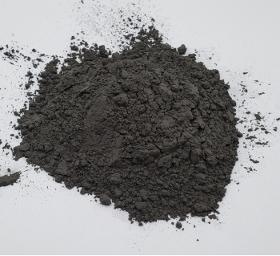
EC PLAZA
South Korea
Solvent resistance: Color-changing dye used in thermochromic capsules is sensitive to aliphatic solvent with a few carbons and resistant to aliphatic or aromatic solvent with a lot of carbons. Thermal resistance: If high temperature needs to be applied, less than 10 minutes at 230℃ is recommended. A prolonged operation at high temperature higher than 75℃ must be avoided because thermochromic organic matters may be resolved at higher than 80℃. Light resistance: Thermochromic products have the grade 1 light fastness, so extended exposure to sun may considerably reduce its color-changing effect.
Request for a quoteRequest for quotes
Create one request and get multiple quotes form verified suppliers.
- Only relevant suppliers
- Data privacy compliant
- 100% free



